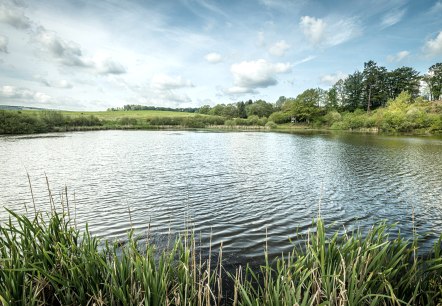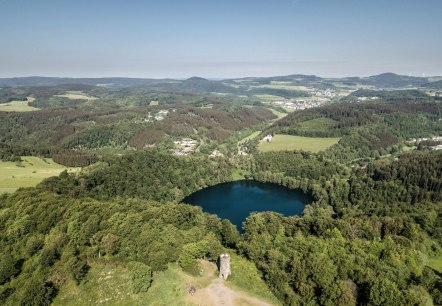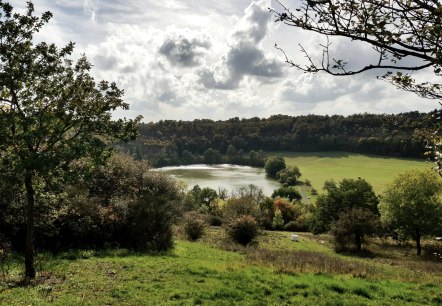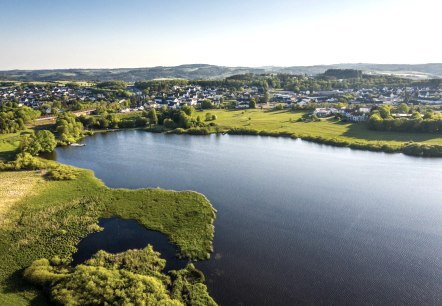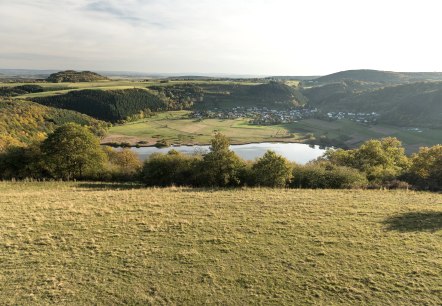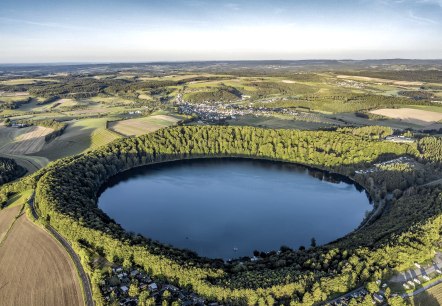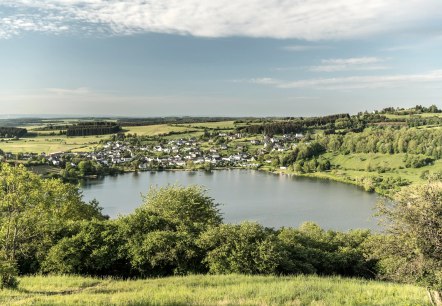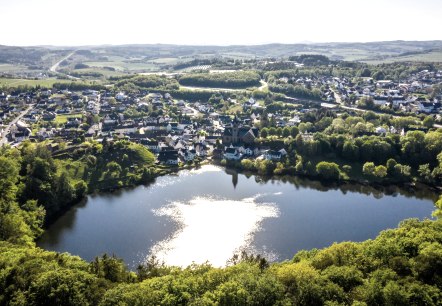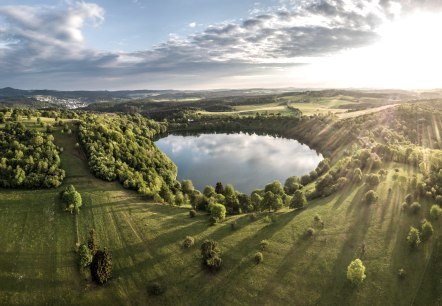The Eifel maars
The water-filled maars are the symbol of the volcanic Eifel. But what is actually a maar?
The term “maar” is taken from the Latin “mare” (sea) and is used to describe the funnel-shaped volcano type created from water vapour eruptions which have “exploded into” the landscape and which outwardly often takes on a key-like shape.
During the initial creation phase of a maar, rising magma meets aquiferous stone layers which leads to massive explosions. The surrounding stone, together with the magma, is shattered into tiny fragments and is hurled out of the explosion funnel.
In the area at the centre of the explosion, a hollow chamber is formed which overflows out of an explosion vent. Due to the fact that the stone formed over the hollow chamber breaks down, the explosion vent becomes a collapsed or maar funnel. After the volcanic activity has died down, the funnel fills with water.
Overall, over 70 maar volcanoes have been counted. Ten maars are still filled with water today, while the others have already silted over.



